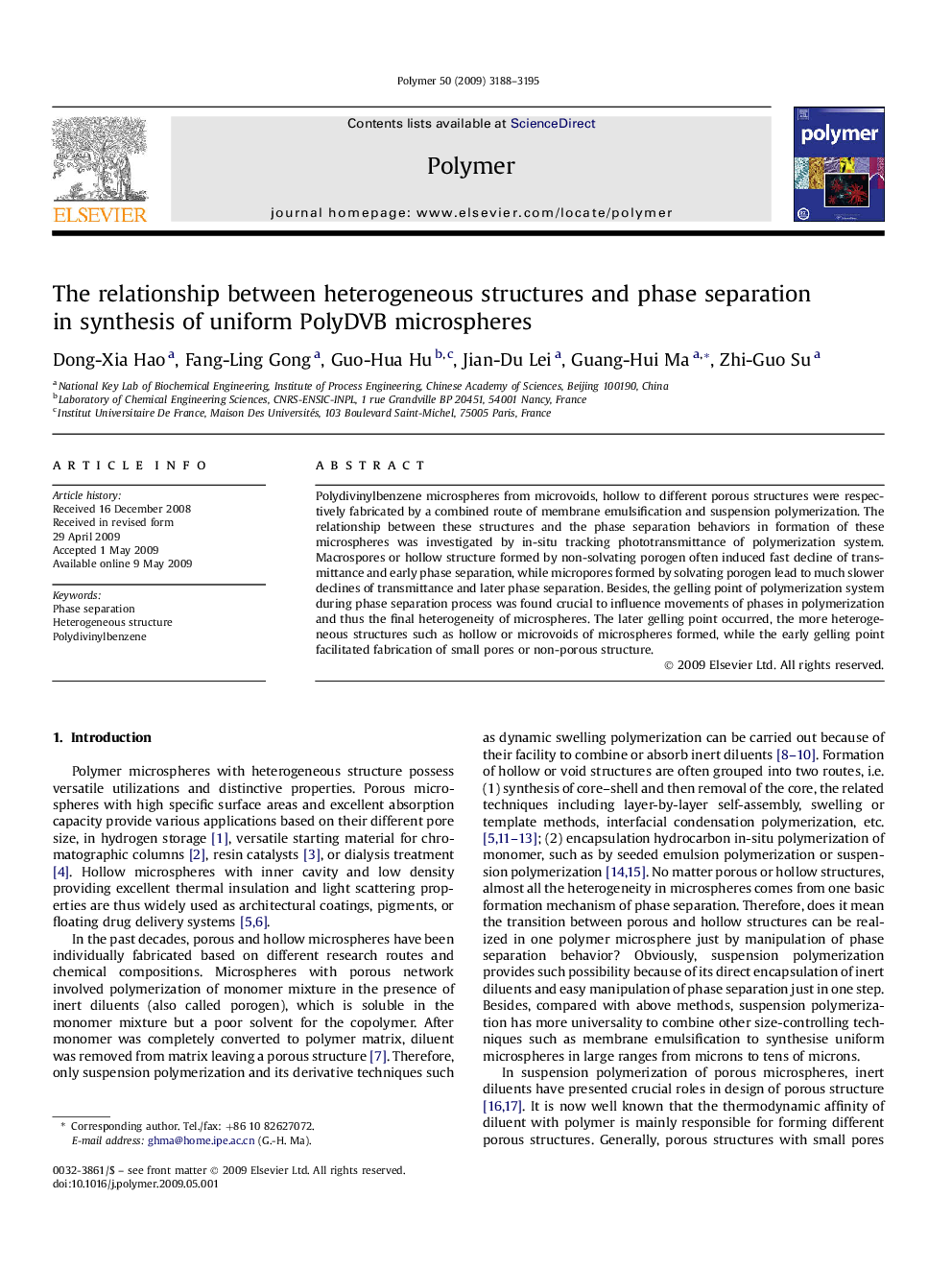| Article ID | Journal | Published Year | Pages | File Type |
|---|---|---|---|---|
| 5187801 | Polymer | 2009 | 8 Pages |
Polydivinylbenzene microspheres from microvoids, hollow to different porous structures were respectively fabricated by a combined route of membrane emulsification and suspension polymerization. The relationship between these structures and the phase separation behaviors in formation of these microspheres was investigated by in-situ tracking phototransmittance of polymerization system. Macrospores or hollow structure formed by non-solvating porogen often induced fast decline of transmittance and early phase separation, while micropores formed by solvating porogen lead to much slower declines of transmittance and later phase separation. Besides, the gelling point of polymerization system during phase separation process was found crucial to influence movements of phases in polymerization and thus the final heterogeneity of microspheres. The later gelling point occurred, the more heterogeneous structures such as hollow or microvoids of microspheres formed, while the early gelling point facilitated fabrication of small pores or non-porous structure.
Graphical abstractDownload full-size image
